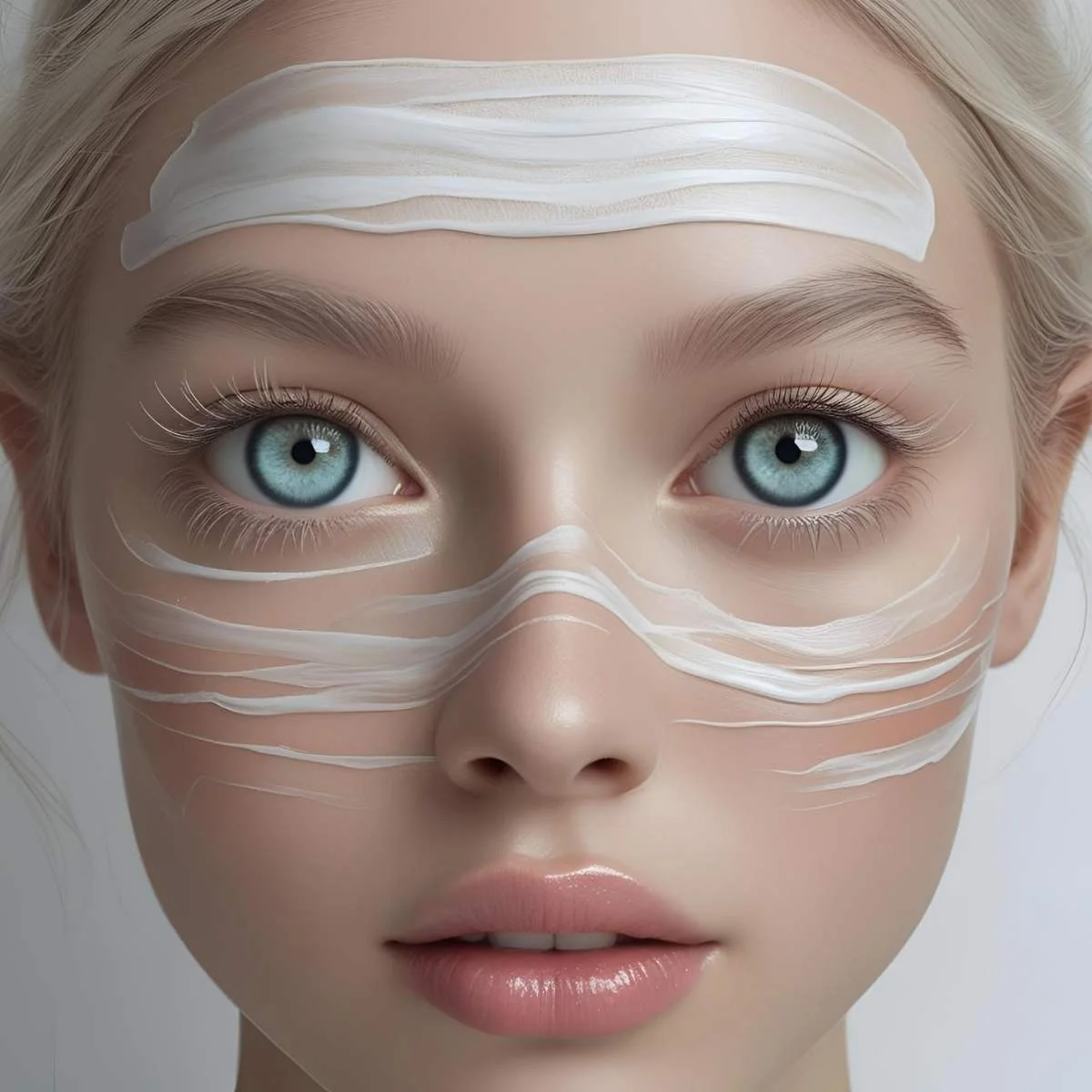The Sparkle of Similes in Language ✨
Similes are like stars in a night sky, using “like” or “as” to illuminate comparisons that make writing and speech vivid and relatable. They transform simple descriptions into vibrant images, turning “Her eyes were bright” into “Her eyes sparkled like diamonds, catching every glint of hope.” For eyes—the gateways to emotion, observation, and connection—similes add depth and magic. Whether in poetry, storytelling, or casual chats, they make moments unforgettable. Ever noticed how a simile can capture a glance’s power? Let’s explore 25 unique similes for eyes, organized by theme, to light up your words! 🌟
Similes for Eyes: 25 Vivid Comparisons
These 25 similes capture the many roles of eyes—observing keenly, expressing emotions, or reflecting culture. Grouped thematically, each includes a meaning, a contextual example, and a specific application for writing, speaking, or creative projects. Let’s see the world through new eyes!
Eyes as Keen Observers 🔍
Similes for eyes that notice details or stay alert.
- Eyes sweep like hawks, scanning every detail.
Meaning: Eyes catch minute details with sharp focus, like hawks hunting prey.
Example: In a detective story, “Her eyes swept like hawks, spotting the clue in the clutter.”
Application: Use in mystery writing or a work email, e.g., “My eyes, like hawks, caught the typo in the report.” - Eyes are searchlights, piercing the fog of confusion.
Meaning: Eyes find clarity in chaos, like searchlights cutting through darkness.
Example: In a classroom scene, “His eyes, searchlights of focus, found the answer on the board.”
Application: Perfect for academic essays or a tweet about solving a problem. - Eyes dart like dragonflies, flitting over every scene.
Meaning: Eyes move quickly, catching fleeting details, like dragonflies skimming water.
Example: In a market scene, “Her eyes darted like dragonflies, spotting the best deal.”
Application: Use in travel blogs or a caption about a busy day, e.g., “Eyes darting like dragonflies at the mall! 🛍️” - Eyes are telescopes, zooming into distant truths.
Meaning: Eyes focus on far-off insights, like telescopes reveal stars.
Example: In a reflective essay, “His eyes, telescopes of wisdom, saw the lesson in her words.”
Application: Great for philosophical writing or a journal entry about clarity. - Eyes pounce like leopards, seizing hidden details.
Meaning: Eyes swiftly catch overlooked clues, like leopards ambush prey.
Example: In a mystery novel, “Her eyes pounced like leopards, catching the smudge on the letter.”
Application: Use in suspense stories or a presentation about attention to detail.
Eyes in Emotional Moments ❤️
Similes for eyes expressing feelings or connecting deeply.
- Eyes shimmer like lakes, reflecting quiet emotions.
Meaning: Eyes mirror subtle feelings, like lakes reflect the sky.
Example: In a love poem, “Her eyes shimmered like lakes, holding the calm of her love.”
Application: Use in romantic writing or a heartfelt card, e.g., “Your eyes shimmer like lakes when you smile.” - Eyes are lanterns, glowing with inner warmth.
Meaning: Eyes radiate kindness or passion, like lanterns emit light.
Example: In a friendship scene, “His eyes, lanterns of care, warmed her during the talk.”
Application: Perfect for character-driven stories or a speech about empathy. - Eyes weep like rivers, carrying tides of sorrow.
Meaning: Eyes express deep sadness, like rivers flow with water.
Example: In a memoir, “Her eyes wept like rivers, mourning the loss of her home.”
Application: Use in emotional essays or a condolence note to convey grief. - Eyes are mirrors, reflecting the heart’s secrets.
Meaning: Eyes reveal inner emotions, like mirrors show reflections.
Example: In a romance novel, “His eyes, mirrors of love, showed his unspoken feelings.”
Application: Great for intimate dialogue or a love letter’s closing line. - Eyes dance like fireflies, sparkling with joy.
Meaning: Eyes light up with happiness, like fireflies glow in the night.
Example: In a family story, “Her eyes danced like fireflies, thrilled by the surprise party.”
Application: Use in joyful narratives or a social media post about a happy moment.
Eyes in Quiet Reflection 🌙
Similes for eyes in calm, introspective, or dreamy moments.
- Eyes are pools, holding dreams in their depths.
Meaning: Eyes contain quiet thoughts, like pools hold still water.
Example: In a poetic scene, “His eyes, pools of thought, held dreams of distant lands.”
Application: Use in reflective poetry or a journal about daydreaming. - Eyes drift like clouds, wandering through memories.
Meaning: Eyes seem lost in thought, like clouds float across the sky.
Example: In a nostalgic story, “Her eyes drifted like clouds, recalling childhood summers.”
Application: Perfect for memoir writing or a caption about reminiscing. - Eyes are stars, twinkling with silent hopes.
Meaning: Eyes shine with aspirations, like stars light the night.
Example: In a graduation speech, “Their eyes, stars of ambition, twinkled with future plans.”
Application: Use in motivational talks or a yearbook quote about dreams. - Eyes glow like embers, smoldering with quiet passion.
Meaning: Eyes hold understated intensity, like embers burn steadily.
Example: In a quiet scene, “His eyes glowed like embers, fixed on the book’s final page.”
Application: Great for introspective stories or a blog about focus. - Eyes are moons, casting soft light on inner thoughts.
Meaning: Eyes reveal gentle insights, like moons illuminate the night.
Application: Use in lyrical writing or a meditation journal, e.g., “My eyes, like moons, lit up my thoughts tonight.”
Eyes in Social Scenes 🎭
Similes for eyes in group settings, conversations, or playful moments.
- Eyes twinkle like sequins, dazzling in the spotlight.
Meaning: Eyes shine with charm, like sequins catch light.
Example: In a party scene, “Her eyes twinkled like sequins, stealing the room’s attention.”
Application: Use in social media captions or a story about charisma, e.g., “Eyes twinkling like sequins at the dance! 💃” - Eyes are cameras, snapping moments of laughter.
Meaning: Eyes capture fleeting fun, like cameras take photos.
Example: In a friend group scene, “His eyes, cameras of joy, snapped the prank’s hilarity.”
Application: Perfect for a vlog script or a group chat message about fun times. - Eyes bounce like ping-pong balls, lively in debate.
Meaning: Eyes move with energy, like ping-pong balls in a game.
Example: In a classroom debate, “Her eyes bounced like ping-pong balls, tracking every argument.”
Application: Use in a school story or a tweet about a lively discussion. - Eyes are sparklers, fizzing with group excitement.
Meaning: Eyes light up with shared enthusiasm, like sparklers at a celebration.
Example: In a club scene, “Their eyes, sparklers of hype, fizzed during the pep rally.”
Application: Great for event recaps or a post about team spirit. - Eyes are magnets, drawing in every glance.
Meaning: Eyes attract attention, like magnets pull metal.
Example: In a drama scene, “Her eyes, magnets of charm, held everyone’s gaze on stage.”
Application: Use in theater writing or a caption about standing out.
Eyes with Cultural Depth 🌍
Similes inspired by cultural or historical imagery.
- Eyes are tapestries, weaving stories of heritage.
Meaning: Eyes reflect cultural narratives, like tapestries weave art.
Example: In a cultural novel, “Her eyes, tapestries of tradition, told stories of her ancestors.”
Application: Use in heritage essays or a speech about cultural pride. - Eyes burn like lanterns, glowing with ancestral wisdom.
Meaning: Eyes shine with inherited знания, like lanterns at a festival.
Example: In a family story, “His eyes burned like lanterns, carrying his grandmother’s tales.”
Application: Perfect for cultural blogs or a post about family roots. - Eyes are scribes, etching moments into memory.
Meaning: Eyes record experiences, like scribes write history.
Example: In a travel memoir, “Her eyes, scribes of the journey, etched the market’s colors.”
Application: Use in travel writing or a journal about cultural trips. - Eyes dance like kites, soaring with global dreams.
Meaning: Eyes reflect diverse aspirations, like kites ride the wind.
Example: In a study abroad story, “His eyes danced like kites, soaring with lessons from abroad.”
Application: Great for global education essays or a caption about travel. - Eyes are kaleidoscopes, twisting sights into vibrant patterns.
Meaning: Eyes creatively interpret visuals, like kaleidoscopes create designs.
Example: In an art essay, “Her eyes, kaleidoscopes of wonder, turned the gallery into magic.”
Application: Use in creative writing or a post about artistic inspiration.
Creative Examples to Inspire Wonder 🎨
These similes paint eyes as dynamic storytellers. “Eyes sweep like hawks” captures a detective’s sharp gaze, perfect for a thriller. “Eyes are moons” evokes quiet dreams, ideal for a poetic journal. Ever thought of your eyes as “cameras” snapping a friend’s laugh? Try it in a group chat caption! Which simile feels like your gaze—are your eyes sparklers at a party or pools in a quiet moment?
Try This: Pick a simile and write a sentence about your day, like “My eyes, like searchlights, caught the sunset’s glow.” Share it with a friend or in a notebook!
Practical Applications for Every Glance 📝
These similes can transform your communication:
- Poetry: Use “eyes shimmer like lakes” for emotional depth, e.g., in a love poem about a tender glance.
- Stories: Add “eyes are magnets” to a drama, showing a character’s charisma, or “eyes weep like rivers” for a sad scene.
- Speeches: Say “Our eyes, like lanterns, light the way forward” in a leadership talk to inspire connection.
- Social Media: Post “Eyes twinkling like sequins at the party! 🎉” for a fun vibe.
- Everyday Chats: Toss “My eyes darted like dragonflies in that meeting!” into a work chat for humor.
Challenge: Rewrite a dull sentence from your day with a simile, like “I looked around” to “My eyes swept like hawks over the room.” Notice the spark it adds!
Conclusion: Let Your Eyes Light Up Your Words 🌌
Similes are your palette for painting eyes as more than just vision—they’re storytellers, dreamers, and connectors. From “hawks” spotting clues to “kaleidoscopes” weaving art, these comparisons make your writing and speech shine. So, grab a simile and try it—maybe “My eyes are stars” in your next essay. Better yet, create your own: are your eyes “comets” blazing with ideas? Share it in a text or tweet to spark a smile. Your eyes see the world—let similes show it in dazzling color! 🎆



